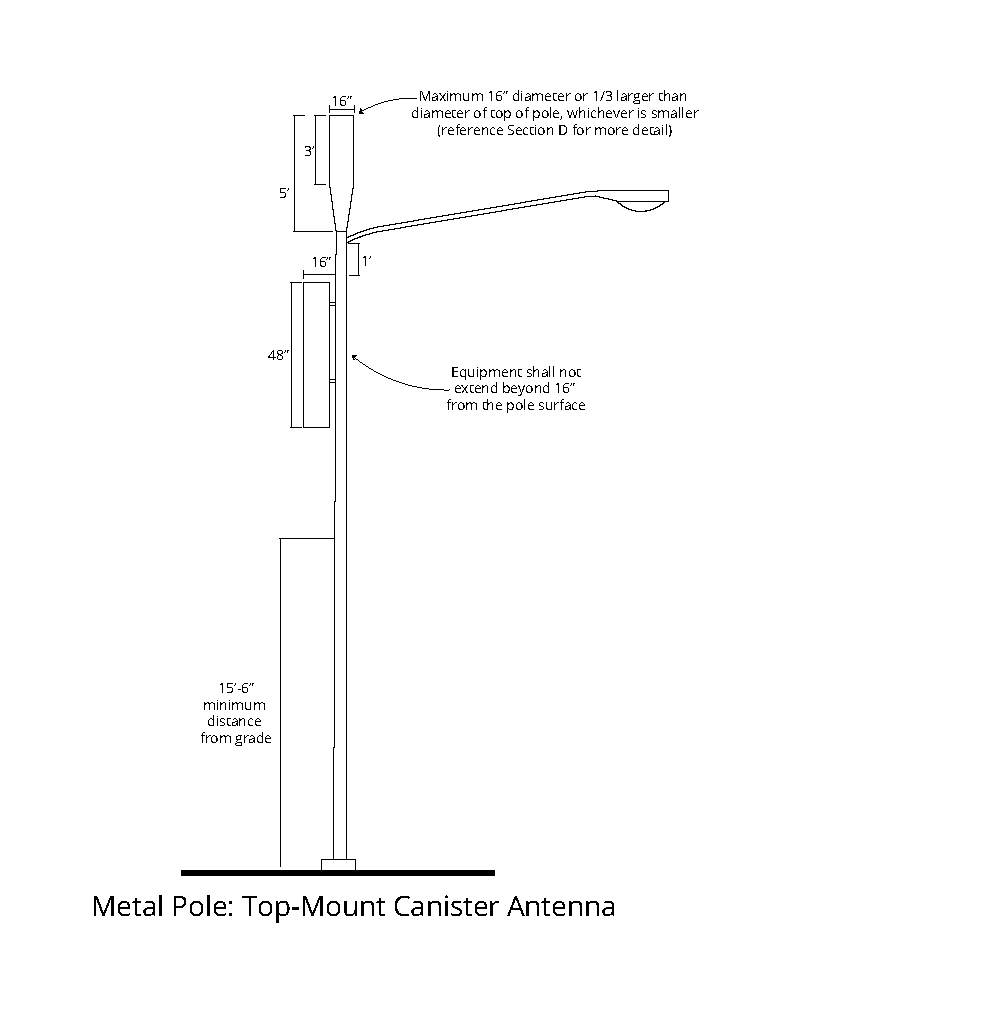
Today, we’ve released our proposed Design Standards for Small Wireless Facilities (SWF) on Poles.
Our goal with these standards is to reduce visual impacts to the streets and sidewalks that form the public right-of-way while establishing rules concerning SWF design.
Wireless providers are already installing SWF in Seattle, and the City is implementing design standards because of the growing interest in placing SWF using poles in the public right-of-way. This version of the design standards has been updated based in part on the comments we received during our November 2019 comment period in the initial draft standards.
Most often installed on poles in the public right-of-way, SWF are antennas and related equipment that are smaller than traditional cell towers and extend wireless network coverage. With more people using smart phones and relying on mobile connectivity, wireless providers will need to increase the capacity of their networks and will want to install more SWF throughout Seattle.
Our proposal sets SWF design expectations for wireless providers, the City, and the public and provides clear direction on City requirements.
These standards are being developed to benefit the people who live, travel, and work in Seattle. The design standards we’re proposing will apply to devices installed on both metal and wood poles in Seattle’s right-of-way, such as telephone poles and streetlights.
To help you visualize what SWF look like, we’re including some examples on wood and metal poles with designs similar to the standards that we’re proposing.
Among other things, the design standards establish the maximum dimensions for any SWF device installed on poles and set the maximum height increase for replacement poles. The standards include specific standards for pole height and diameter, canister and antenna size, accessory equipment locations, and cabling and conduit. There are also standards related to location preferences, context and placement, noise, and lighting, and specific design standards for the new Seattle Waterfront project area. The SWF installations will also need to comply with Streets Illustrated and the Americans with Disabilities Act (ADA). For more details, including photos and diagrams, you can read the design standards online. You can also find answers to frequently asked questions about SWF here.
Below, you’ll find a few diagrams of what the standards allow.
We have released a SEPA Threshold Determination of Non-Significance (DNS) in conjunction with the design standards. We are currently accepting comments on the SWF design standards. The public comment period runs for two weeks from February 13, 2020 and closes at 5pm on February 27, 2020. In addition, any interested party may appeal the SEPA DNS by submitting a Notice of Appeal and a filing fee to the Office of the Hearing Examiner no later than 5:00pm on March 5, 2020. Please see the DNS for more information on submitting appeals.
Comments may be submitted online, by e-mail at telecom.wireless@seattle.gov, or by mail to:
Seattle Department of Transportation
Attn: Alyse Nelson
PO Box 34996
Seattle, WA 98124






